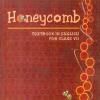How to prepare for Class 7 Science: Tips & Tricks for Science PDF Download
| Table of contents |

|
| NCERT Textbooks and solutions |

|
| Practice tests |

|
| Important Topics and Preparation tips for Each Chapter |

|
| Similarly, Prepare For Other Subjects Of Class 7: |

|
| Other Subjects of Class 7: |

|
One thing to be kept in mind all along the way for Science preparation is that practice is the key here. The more you practice for every topic, the better understanding is achieved.
These topics should be practiced as much as possible. The key to solve problems is to by-heart the formulas, understand the theorems, and practice as many times as possible. Science can become your favorite subject with practice and dedication.
Science for Class 7 (VII) - CBSE & NCERT Curriculum
Includes 106 docs, 162 videos & 36 tests
Tips & Tricks for Science :
1. Study from the Science NCERT Textbook and practice all the solved examples and exercise questions thoroughly before moving forward to extra practice from additional books. Refer to NCERT Solutions in case of any doubt.
NCERT Textbooks and solutions
Chapter 1 - Nutrition in Plants
- NCERT Textbook Chapter 1 Nutrition in Plants; Class 7; Science
- NCERT Solution - Chapter 1: Nutrition in Plants; Class 7; Science
Chapter 2 - Nutrition in Animals
- NCERT Textbook Chapter 2 Nutrition in Animals; Class 7; Science
- NCERT Solution - Chapter 2: Nutrition in Animals; Class 7; Science
Chapter 3 - Fibre to Fabric
- NCERT Textbook Chapter 3 Fibre to Fabric; Class 7; Science
- NCERT Solutions: Chapter 3 - Fibre to Fabric; Class 7; Science
Chapter 4 - Heat
Chapter 5 - Acids, Base and Salts
- NCERT Textbook Chapter 5 Acids; Bases and Salts ; Class 7; Science
- NCERT Solution - Chapter 5: Acids; Bases & Salts; Class 7; Science
Chapter 6 - Physical and Chemical Changes
- NCERT Textbook Chapter 6 Physical and Chemical Changes; Class 7; Science
- NCERT Solution: Chapter 6 - Physical & Chemical Changes; Class 7; Science
Chapter 7 - Weather, Climate and Adaptations of Animals to Climate
- NCERT Textbook Chapter 7 Weather; Climate and Adaptations of Animals to Climate; Class 7; Science
- NCERT Solution: Chapter 7 - Weather & Climate; Science; Class 7
Chapter 8 - Winds, Stroms and Cyclones
- NCERT Textbook Chapter 8 Winds; Storms and Cyclones; Class 7; Science
- NCERT Solution: Chapter 8 - Winds; Storms & Cyclones; Class 7; Science
Chapter 9 - Soil
Chapter 10 - Respiration in Organisms
- NCERT Textbook Chapter 10 Respiration in Organisms; Class 7; Science
- NCERT Solution - Chapter 10 - Respiration in Organisms; Class 7; Science
Chapter 11 - Transportation in Animals and Plants
- NCERT Textbook Chapter 11 Transportation in Animals and Plants ; Class 7; Science
- NCERT Solution: Chapter 11 - Transportation in Animals & Plants; Class 7; Science
Chapter 12 - Reproduction in Plants
- NCERT Textbook Chapter 12 Reproduction in Plants ; Class 7; Science
- NCERT Solution - Chapter 12: Reproduction in Plants; Class 7; Science
Chapter 13 - Motion and Time
- NCERT Textbook Chapter 13 Motion and Time ; Class 7; Science
- NCERT Solution: Chapter 13 - Motion & Time; Class 7; Science
Chapter 14 - Electric Current and Its effects
- NCERT Textbook Chapter 14 Electric Current and its Effects; Class 7; Science
- NCERT Solution: Chapter 14 - Electric Current & its effects; Class 7; Science
Chapter 15 - Light
- NCERT Textbook Chapter 15 Light; Class 7; Science
- NCERT Solution: Chapter 15 - Light; Class 7 Science
Chapter 16 - Water - A Precious Resource
- NCERT Textbook Chapter 16 Water: A Precious Resource; Class 7; Science
- NCERT Solution: Chapter 16 - Water - A Precious Resource; Class 7; Science
Chapter 17 - Forests - Our Lifeline
- NCERT Textbook Chapter 17 Forests: Our Lifeline; Class 7; Science
- NCERT Solution - Chapter 17: Forests-Our Lifeline; Class 7; Science
Chapter 18 - Wastewater story
- NCERT Textbook Chapter 18 Wastewater Story; Class 7; Science
- NCERT Solution: Chapter 18 - Wastewater Story; Class 7; Science
2. Practice, above all. The range of questions in class 7 is limited. With substantial practice, most question types will be internalized, and you won’t have to think for most questions.
3. Develop a good understanding of topics. It will help you with those challenging questions or derive formulae in the rare chance you forget. This can be done by watching videos for various topics that will help you develop an interest in the topic.
4. Understand all the concepts in as much depth as you can. And then solve different varieties of questions and problems. Attempt various topic-wise and chapter-wise tests. Also, practice mre with sample papers and previous year papers. Use your knowledge to solve some real life questions as well.
Practice tests
- Nutrition In Plants - Class 7, Science - MCQ Test
- Nutrition In Animals - Class 7, Science - MCQ Test
- Fibre To Fabric- Class 7, Science - MCQ Test
- Heat - Class 7, Science - MCQ Test
- Acids Bases And Salts - Class 7, Science - MCQ Test
- Physical And Chemical Changes - Class 7, Science - MCQ Test
- Weather Climate And Adaptations Of Animals To Climate - Class 7, Science - MCQ Test
- Winds Storms And Cyclones - Class 7, Science - MCQ Test
- Soil - Class 7 Science - MCQ Test
- Respiration In Organisms - Class 7, Science - MCQ Test
- Transportation In Animals And Plants - Class 7, Science - MCQ Test
- Reproduction In Plants - Class 7, Science - MCQ Test
- Motion And Time- Class 7, Science - MCQ Test
- Electric Current And Its Effects - Class 7, Science - MCQ Test
- Light - Class 7, Science - MCQ Test
- Water A Precious Resource- Class 7, Science - MCQ Test
- Forests Our Lifeline - Class 7, Science - MCQ Test
- Waste Water Story - Class 7, Science - MCQ Test
5. Give more importance to the topics which have high weightage. Solve the previous year exam papers which will increase your confidence and give you a pre-exam feel. It also helps to brush up all your concepts before the exam.
6. Don’t just read or mug up the topics but practice them. This is the most important thing which you need to keep in mind as reading Science does not help you. Instead, make a routine and give some time for practice.
Important Topics and Preparation tips for Each Chapter
Chapter 1: Nutrition in Plants
This chapter covers the process of food preparation by plants by utilising raw material present in the environment.
- Photosynthesis: Definition, equation and importance
- Conditions required for photosynthesis
- Other modes of nutrition in plants
Chapter 2: Nutrition in Animals
This chapter is about nutritional habits of animals. You will get to know about different organs that are involved in the process of obtaining nutrition from food that you eat. It also covers about nutrition in amoeba.
- Human digestive system
- Teeth and tongue
- Digestion in ruminants
- Nutrition in amoeba
Chapter 3: Fibre to Fibre
This chapter involves a study of wool and silk which are natural fibres. It also covers the steps involved in the processing of wool and silk fibre.
- Silk
- Fleece
- Wool
- Reeling
- Sericulture
- Selective breeding
- Pashmina shawls
- Shearing, scouring and sorting
- Caterpillars, cocoon and pupa
- Rearing and breeding of sheep and silkworms
Chapter 4: Heat
In our day-to-day life, we come across a number of objects. Some of them are hot and some of them are cold. This chapter tries to find out how hot or cold an object is.
- Temperature
- Clinical and laboratory thermometers
- Conduction, convection and radiation
- Conductors and insulators
- Sea breeze and land breeze
Chapter 5: Acids, Bases and Salts
In our daily life, we use a large number of substances which are acid, base or salt. They vary in taste and touch. They also lead to changing colours of specific substances which are called indicators. Acid and base combine and form salt which may be acidic, basic or neutral in nature. This is called neutralisation which hasimportance in our daily life. This chapter covers all these things in detail.
- Acids
- Bases
- Salts
- Indicators
- Litmus paper
- Neutralisation
Chapter 6: Physical and Chemical Changes
Every day you come across many changes in your surroundings. These changes may be physical or chemical. This chapter helps you to classify changes occurring around you as physical or chemical or both in one process.
- Physical change
- Chemical change
- Rusting
- Crystallisation
- Galvanisation
Chapter 7: Weather, Climate, and Adaptations of Animals to Climate
In this chapter, students can learn about phenomenon like why do we have different climates on different parts of the earth and how and why seasons change after a particular time. Why sometimes it is bright and sunny in the morning and then suddenly it starts to rain. You will get answers to all such questions in this chapter.
- Climate and weather and factors affecting them
- Adaptations of animals to different climatic regions
Chapter 8: Wind, Storms and Cyclones
This chapters covers many natural phenomena related to wind and the pressure difference on earth surface. You may see such phenomena like storms and cyclones on TV and in newspapers occurring frequently on the earth in various regions.
- Wind and wind current
- Wind flow pattern
- Monsoon
- Thunderstorms and cyclones
- Hurricane, tornadoes and typhoon
- Cyclone alert or Cyclone watch
- Cyclone warning
- Anemometer
Chapter 9 – Soil
- Soil Profile
- Types of soil and their characteristics
- Sandy soil
- Clayey soil
- Loamy soil
- Properties of soil
- Percolation rate of water
- Moisture in soil
- Absorption of water by soil
- Soil and crop relationship
Chapter 10 – Respiration in Organisms
- Mechanism of breathing
- Breathing rate
- Human respiratory system-Diagram
Chapter 11 – Transportation in Animals and Plants
- Diagram of Heart and functioning
- Human excretory system- Diagram and Functioning
- Types of blood vessels
- Xylem, Phloem
Chapter 12 – Reproduction in Plants
- Modes of Asexual Reproduction
- Pollination
- Fertilization
- Seed Dispersal
Chapter 13: Motion and Time
Once you change your position from one place to another place, you are said to be in motion. Sometimes you cover the same distance in a short time while some times it takes a long time. We say slow and fast in these cases. Distance and time are inter-related in the form of speed.
- Slow and fast motion
- Rectilinear, circular and periodic motions
- Uniform and non-uniform motion
- Average and instantaneous speed
- Oscillation
- Time periodic
- Distance-time graph
- Odometer and speedometer
Chapter 14 – Electric Current and its Effects
- Electronic Components & Circuit
- Electric cell & Battery
- Heating Effect of Current
- Magnetic Effect of Current
- Electric Fuse & MCB
- Electromagnet & Electric Bell
Chapter 15 – Light
Light travels in a straight line and is composed of seven colors. Rainbows is a natural phenomenon which supports this. Light also reflects back when is incident on a smooth surface. Mirrors are based on the same concept. Image is formed in the plane mirror due to reflection of light. The image formed is virtual, erect and laterally inverted.You see so many other types of optical objects also around you, like spoon, rear view mirrors in vehicle, magnifying glasses, mirrors at blind turns, shaving mirrors etc. Some of them form real image and some also forms virtual images. The mirror which is bulged out is convex mirror. It forms erect, virtual image which is smaller in size. It is also used as magnifying glass. The mirror which is bulged in is concave mirror. It can form both real and virtual image.
- Properties of Light and Reflection
- Image Formed by Plane Mirror
- Image Formed by Spherical Mirror
- Image Formed by Spherical Lenses
- White Light and Seven colors
Chapter 16 – Water: A Precious Resource
Understand and learn about different sources of freshwater. Understand how water on the earth is managed by various processes that result in the water cycle. Understand and learn the concept of groundwater and the various terms related to it.
- Distribution of water on the Earth
- Forms of water
- Water cycle
- Ground water
- Water table
- Infiltration
- Aquifer
- Factors responsible for depletion of water table
- Increasing industries
- Agricultural activities
- Increasing population
- Water management (water harvesting)
- Water saving habits
Chapter 17 – Forests: Our Lifeline
Observe what happens when a plant is uprooted. Understand the importance of trees and forests in our daily lives.
- Decomposers with examples
- Role of forests
Chapter 18 – Wastewater Story
Understand what is sewage, how it is produced and what happens when sewage remains untreated. Learn about the various techniques that can be applied in daily life to reduce wastewater. Understand the sewage treatment process in detail.
- Wastewater
- Contaminants
- Components of sewage
- Wastewater treatment plant (WTP)
- Measures to reduce waste generation
- Sanitation
Similarly, Prepare For Other Subjects Of Class 7:
How to prepare for Hindi for Class 7?
How to prepare for Social Science (History) for Class 7?
How to prepare for Social Science (Civics) for Class 7?
How to prepare for Social Science (Geography) for Class 7?
How to prepare for English for Class 7?
How to prepare for Math for Class 7?
Other Subjects of Class 7:
Social Science Studies (SST) Class 7 (VII) - CBSE, NCERT
Includes 105 docs, 91 videos & 60 tests
Mathematics for Class 7 (VII) - CBSE & NCERT Curriculum
Includes 69 docs, 220 videos & 30 tests
Hindi (Vasant II) Class 7 (VII) - CBSE & NCERT Curriculum
Includes 53 docs & 21 videos
English Honeycomb for Class 7 - CBSE and NCERT Curriculum
Includes 48 docs
English An Alien Hand Class 7 (VII) - CBSE, NCERT Curriculum
Includes 35 docs & 1 video
FAQs on How to prepare for Class 7 Science: Tips & Tricks for Science
| 1. How can I effectively prepare for Class 7 Science? |  |
| 2. What are some tricks to excel in Science Class 7? |  |
| 3. How can I score well in the Class 7 Science exam? |  |
| 4. What are some important topics in Class 7 Science? |  |
| 5. Where can I find additional study materials for Class 7 Science? |  |





















